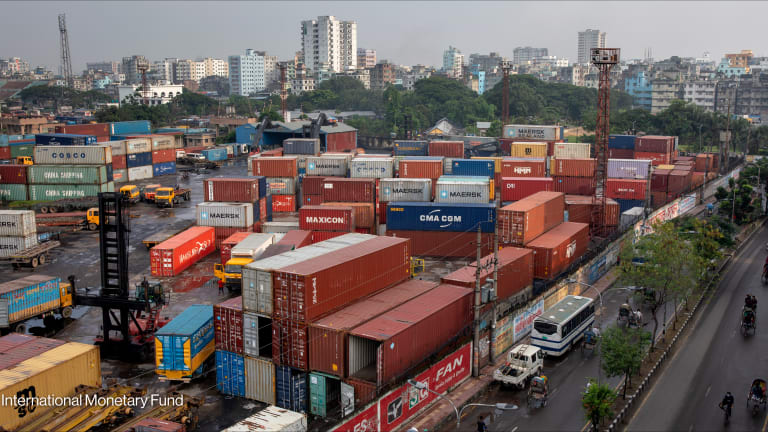Irish aid: A primer
We crunched the numbers to see how Ireland spent almost $3 billion on development aid in 2023.
Continuing a series of primers on English-speaking donors, we now turn our attention to a long-standing Development Assistance Committee member country, Ireland, to see how much it spends on development and what its priorities are. A former aid recipient, Ireland successfully transformed its economy to become a donor itself. It first established a development program, called Irish Aid, in 1974. Then, in 1985, it formally joined DAC. Ireland’s foreign assistance is headed by the Department of Foreign Affairs, while the Department of Finance maintains its relationships with the European Union. Other agencies also take part in development works, particularly refugee-related. Ireland’s aid spending remained steady throughout the decade, then skyrocketed in 2022 and 2023 due to increased allocation for hosting refugees. From $1.2 billion in 2021, Irish aid more than doubled to $2.6 billion in 2022, and then rose to $2.8 billion the following year. Preliminary data for 2024 estimates Ireland’s official development assistance, or ODA, at $2.4 billion — about 0.57% of its gross national income. This places the country seventh among the largest DAC providers relative to their economy. By channel, more than half of Ireland’s ODA was spent bilaterally. This was worth $2.1 billion in 2023. Of this, $1.7 billion, or 79%, went to activities with multiple recipient countries from different regions. The Organisation for Economic Co-operation and Development uses the catch-all term “development countries, unspecified” for such aid. Based on the latest final data from the OECD, Ireland spent mostly on multirecipient projects. Among country-specific activities, a considerable sum of Irish aid went to countries in sub-Saharan Africa. Among country-specific aid, the largest sum went to Ethiopia, worth $42.9 million. Then Ukraine, with $30.6 million; Mozambique, with $28 million; Tanzania, with $26.9 million; and Malawi, with $25.7 million. Sectorally, 68.7% of the bilateral aid in 2023, worth $1.5 billion, went to in-donor refugee costs. Otherwise, it spent a sizable portion on humanitarian aid. Material relief assistance and services — one humanitarian aid sector — ranked next, with $160.4 million; alongside basic health care, with $26.7 million; and basic nutrition, with $26.4 million. Otherwise, the largest areas were administrative costs, with $51.5 million, and unspecified activities, with $29.8 million. The remaining 23.8% of aid in 2023, worth $671 million, went to multilaterals. Of this, $374.6 million, or 55.8%, went to the European Commission development share of budget — the EU’s general budget for its development work. The other top multilateral recipients were the International Development Association, with $40.2 million; the International Monetary Fund’s Poverty Reduction and Growth Trust, with $26 million; and The Global Fund to Fight AIDS, Tuberculosis and Malaria, with $23.5 million.
Continuing a series of primers on English-speaking donors, we now turn our attention to a long-standing Development Assistance Committee member country, Ireland, to see how much it spends on development and what its priorities are.
A former aid recipient, Ireland successfully transformed its economy to become a donor itself.
It first established a development program, called Irish Aid, in 1974. Then, in 1985, it formally joined DAC.
This story is forDevex Promembers
Unlock this story now with a 15-day free trial of Devex Pro.
With a Devex Pro subscription you'll get access to deeper analysis and exclusive insights from our reporters and analysts.
Start my free trialRequest a group subscription Printing articles to share with others is a breach of our terms and conditions and copyright policy. Please use the sharing options on the left side of the article. Devex Pro members may share up to 10 articles per month using the Pro share tool ( ).
Miguel Tamonan is a Senior Development Analyst at Devex, where he analyzes data from public and private donors to produce content and special reports for Pro and Pro Funding readers. He has a bachelor’s degree in Political Science with a Major in International Relations from the Polytechnic University of the Philippines.








